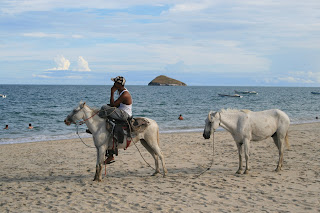

My welcome home also coincided with my first full-body jaguar paint! Below is my picture. I think it’s pretty spectacular. Unfortunately, I agreed to the painting without remembering I had to go into Panama City the very next day. I was quite the spectacle. I caught many perplexed stares, commentaries from wide-eyed kids (“Mira la gringa, mama!”), and I also noted that as I sat on the bus one man shifted away from me for fear I would rub off on his nice, white button-down. Yeah, definitely “bien pintada.” But to anyone outside of my village, “bien ridículo.” Que va!

Back to work! I started back up with my English classes after my medical time-out. Three weeks in the city left me with a good amount of time to lesson plan, and I came back energized with new ideas and handouts. I was impressed by my adult students’ enthusiasm in starting back up, and I was so proud at their retention of our first three months’ lessons.
Luckily, I was able to meet with IPACOOP (the Panamanian agency that supports cooperatives) frequently during my stay in the city. We just put the finishing touches on our feasibility study, and it should be ready for submission next week (end of November). Fingers crossed that all goes well. After we find out if we’re approved, it will be a long process of trainings and implementation. Cooperatives must work very transparently, and submit reports and financial statement to IPACOOP. I’m excited to be involved in this (that’s my inner analytical finance geek talking), but I’m also very worried about my community infrastructure. Our tourism group leaders (including our treasurer) are smart and incredibly hard workers, but most have not gone beyond the 6th grade and have never been given the skills needed to run a business. IPACOOP will provide trainings to new cooperatives, but I hope that we can devise a good system internally for making sense of our operations and money. Currently, I’m fervently exploring options for a community laptop, as there’s a good amount of money that moves from tourism in this little village and it would be such an asset in improving the ease and transparency of their day-to-day book keeping and record retention.
Another huge issue that we’re making headway on: cost analysis and pricing. In the past, prices have been rather arbitrarily set. They also haven’t been raised in sync with the rising cost of gasoline (about 60% of the cost to get to our little jungle village). In late September, myself and our tourism president attended a Peace Corps tourism seminar in Bocas del Toro, arranged by my boss (see pictures below!) It was a fantastic experience for all of our community members; my counterpart asked my boss to come to our village and give a similar seminar to all Embera communities in the canal area. On November 13th, Pablo came to the community and put on a fabulous seminar, focusing on cost analysis and determining appropriate pricing. He also did a fantastic section on group work and leadership. All of the canal communities are currently working on creating new tariffs, and we hope to present to tour agencies before this coming year.












 Embera roofs are put together bottom-up, and then you've got to slide your way down!
Embera roofs are put together bottom-up, and then you've got to slide your way down! Junta fun!
Junta fun! 
 At last....HOME SWEET HUT! My architect Auristo, me, and my host dad Adan.
At last....HOME SWEET HUT! My architect Auristo, me, and my host dad Adan.
























 Also below are some shots from our Cross Sectorial training (translation: TEA does Agriculture and Environental Health training!) Here's some shots of me swinging a machete, gardening and playing on an acqeduct:
Also below are some shots from our Cross Sectorial training (translation: TEA does Agriculture and Environental Health training!) Here's some shots of me swinging a machete, gardening and playing on an acqeduct:









